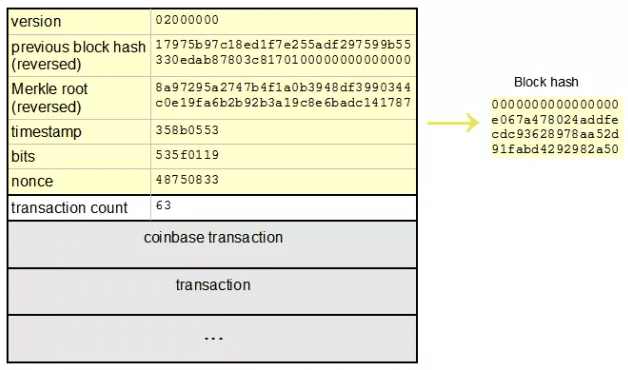Bitcoin Algorithm Explained
The Bitcoin algorithm is an essential element in the validation of Bitcoin transactions (called Proof of work) and mining of new Bitcoin. In both cases, Bitcoin miners must solve mathematical equations that are generated by Bitcoin's algorithm. Before we dive into the details of the Bitcoin algorithm, let's review the basics on Bitcoin…
Bitcoin is a peer-to-peer digital currency that is designed to serve as a medium of exchange for the purchase of goods and services. With Bitcoin, individuals are able to execute cross-border digital payments at virtually no cost, all without having to involve any financial intermediaries. Bitcoin is underpinned by a piece of technology known as the blockchain, which can be thought of as a ledger that keeps a transparent and immutable record of economic transactions that are made using Bitcoin. A significant element of Bitcoin that facilitates its operation is the Bitcoin algorithm for proof of work mining, which is known as Secure Hash Algorithm 256 (SHA-256).
Bitcoin Algorithm: Proof of work
Proof of work mining is an essential component of the Bitcoin system that enables for the correct processing of transactions on the blockchain. The mining element of the proof of work process concerns individuals (who are known as miners), generating correct proofs that are necessary before a block can be added to the blockchain. Miners will use data from a block header as an input, and put it through a cryptographic hash function. In the case of Bitcoin, this hashing function is SHA-256.
Miners will also include a nonce in the input so that they can hash slight variations of the input data. The purpose of proof of work mining is to get a hash value that is lower than the target hash that has been set by the network. If the correct output hash value is found by a miner, they will be able to process transactions and add a new block to the blockchain. Miners are also rewarded in bitcoins for successfully finding a valid hash.
It is also important to note that producing a correct hash value in Bitcoin’s proof of work system is probabilistically low, thus, a miner will typically need to generate a large number of incorrect hashes before a valid hash is found.
Bitcoin Algorithm: SHA-256
Individuals that wish to mine on the Bitcoin network must operate what is known as a mining node, which is a node that has been specially set up to mine on the network. Once a mining node is operational, miners can then begin to construct what are known as candidate blocks. These blocks must be properly constructed by a miner, and doing so requires that 6 parameters which are found in each candidate block be filled in correctly. These parameters include:
- Version – The version number of the Bitcoin software.
- Previous block hash – A reference to the hash of the previous block that was included on the blockchain.
- Merkle Root – A representative hash of all transactions that are included in the candidate block.
- Timestamp – A piece of information that references the time that the block was created.
- Target – The target hash threshold, this block’s header hash must be less than or equal to the target hash that has been set by the network.
- Nonce – The variable that is used in the proof of work mining process.
The candidate block is then relayed to the rest of the network so that it can be checked for its validity. If the block is regarded as valid by the rest of the network, then it will be added to the blockchain.
Network Difficulty
The Bitcoin algorithm also incorporates what is known as network difficulty. This concept can be thought of as being the measure by which one can determine the difficulty of finding a correct hash value in the proof of work mining process. This difficulty can change based on an increase or decrease in the target hash value.
For example, if the rate at which valid hashes are being discovered on the network increases, then the network target hash value will be lowered. This has the effect of reducing the number of valid hashes that are capable of being discovered. Conversely, if there is a decrease in the rate of correct hashes being discovered, then the network target hash value will increase in order to enlarge the number of valid hash values that can be found.
Conclusion
Understanding Bitcoin's algorithm should help explain how Bitcoin works, how it's traded, and what makes it secure. To learn more about trading Bitcoin, check out our Beginner's Guide to Cryptocurrency Trading and learn how to start trading with the help of professionals.



